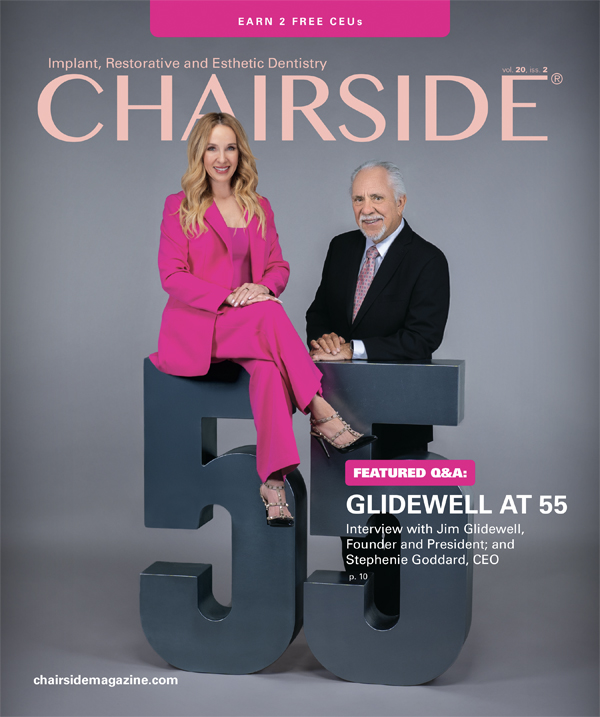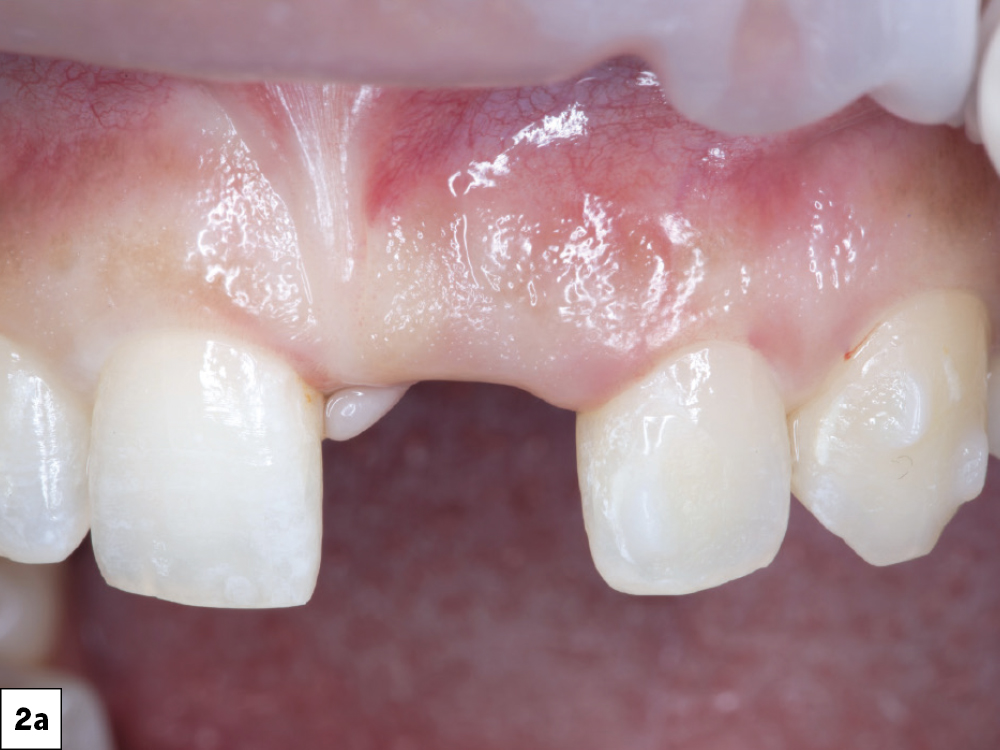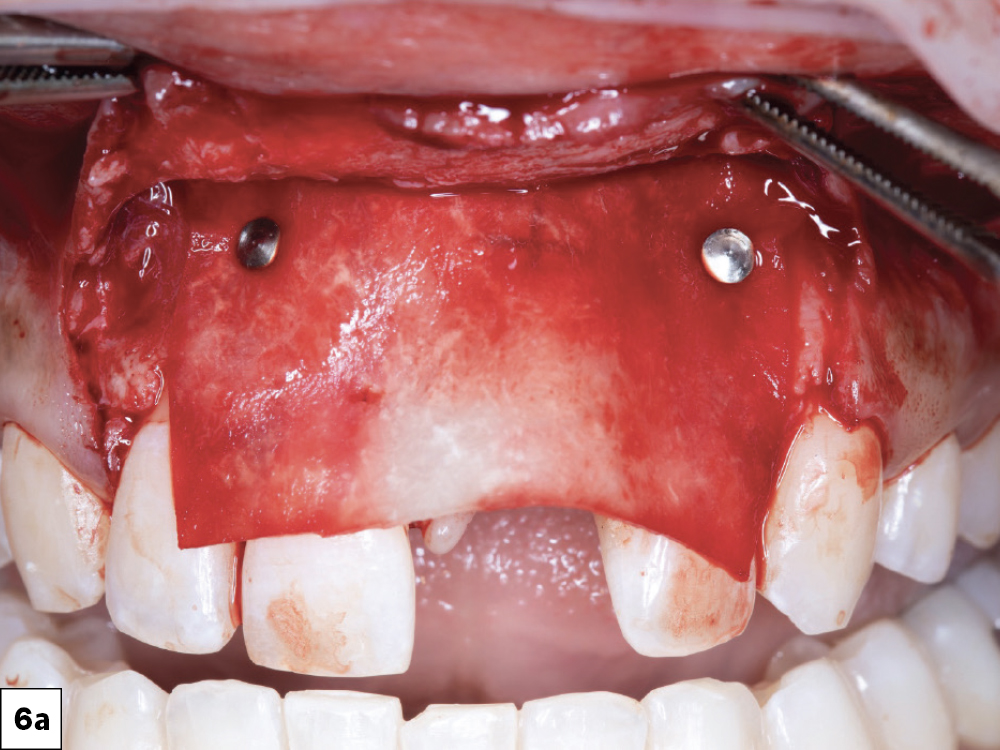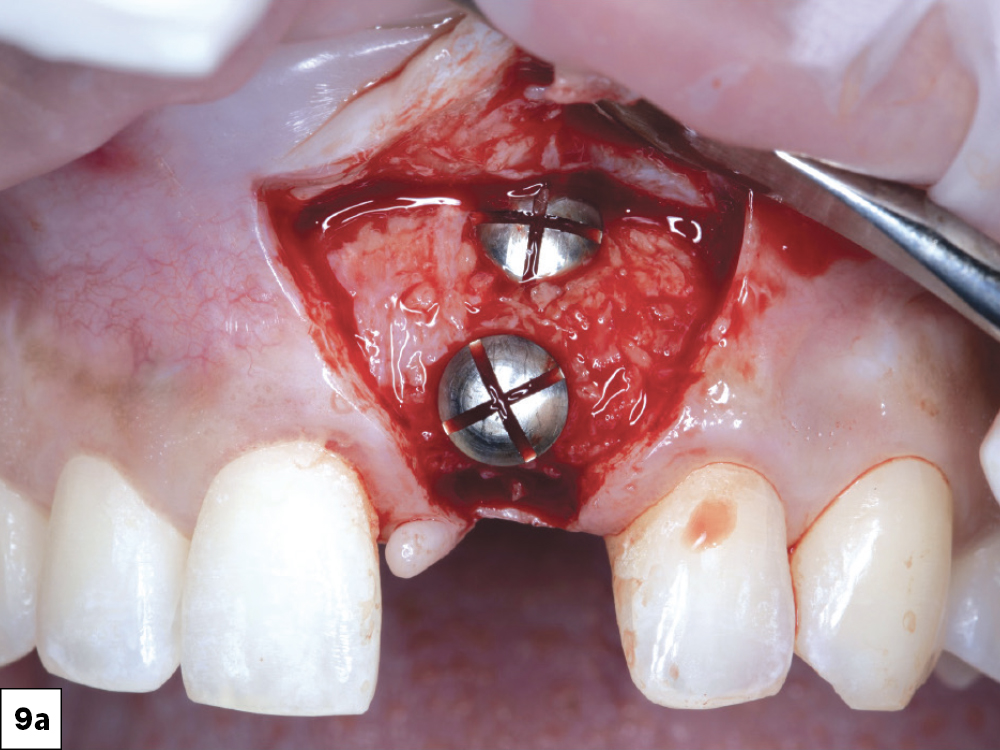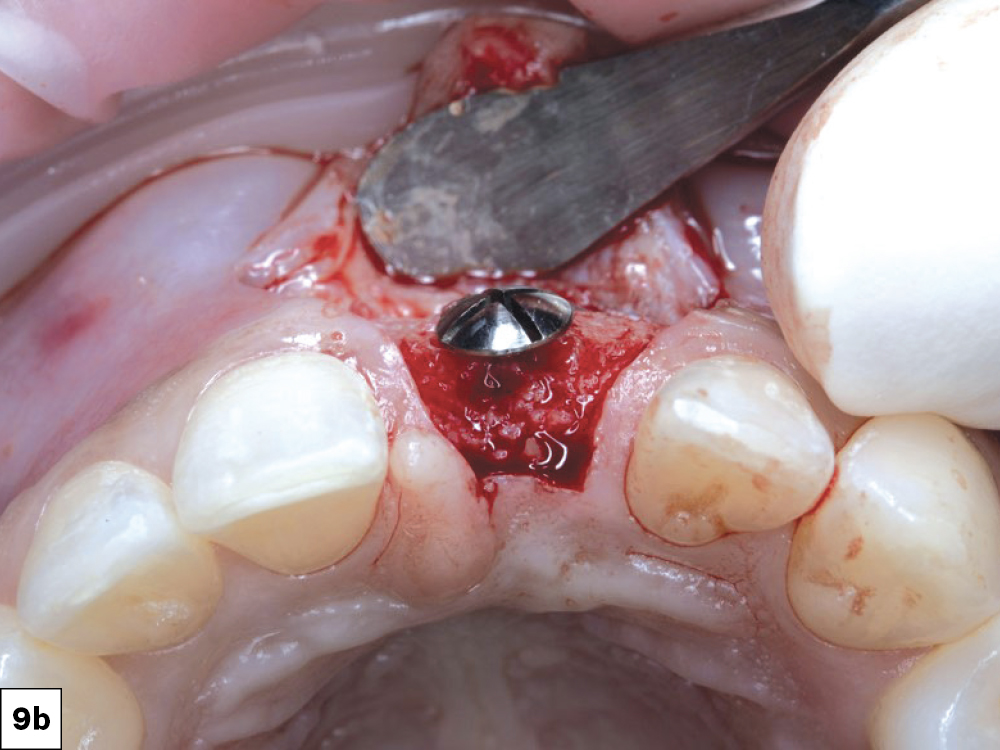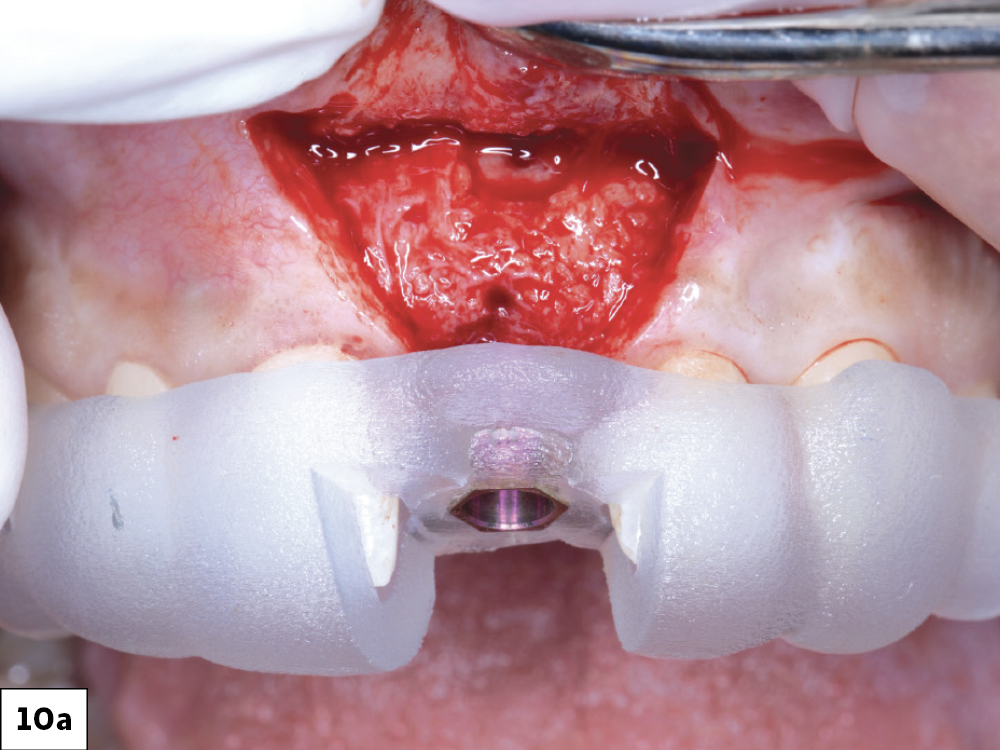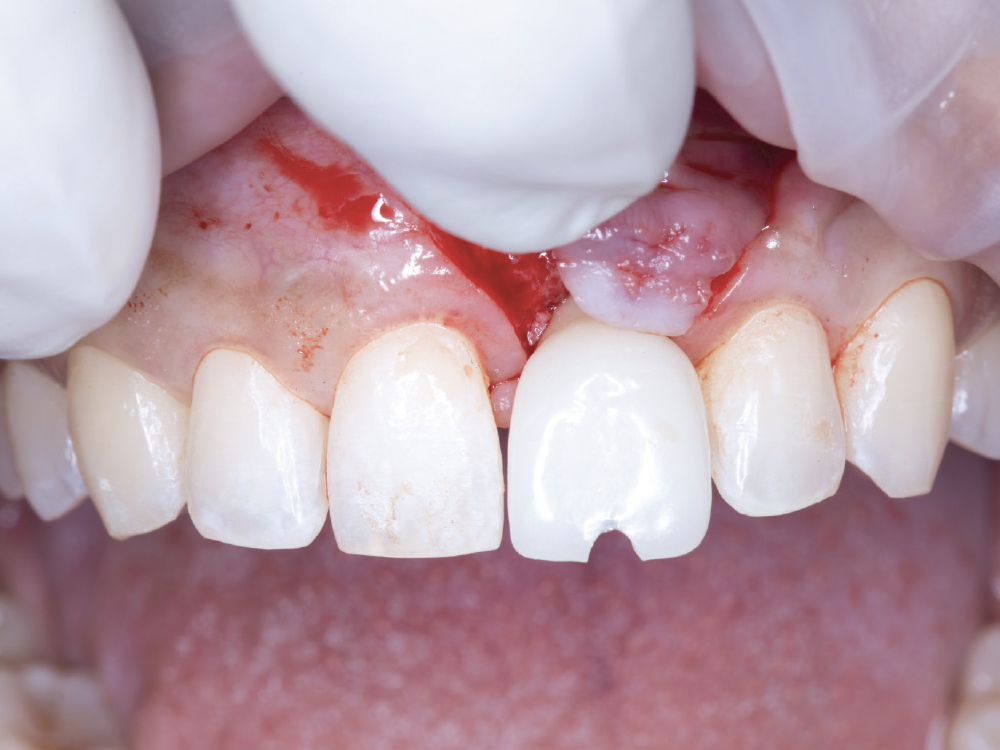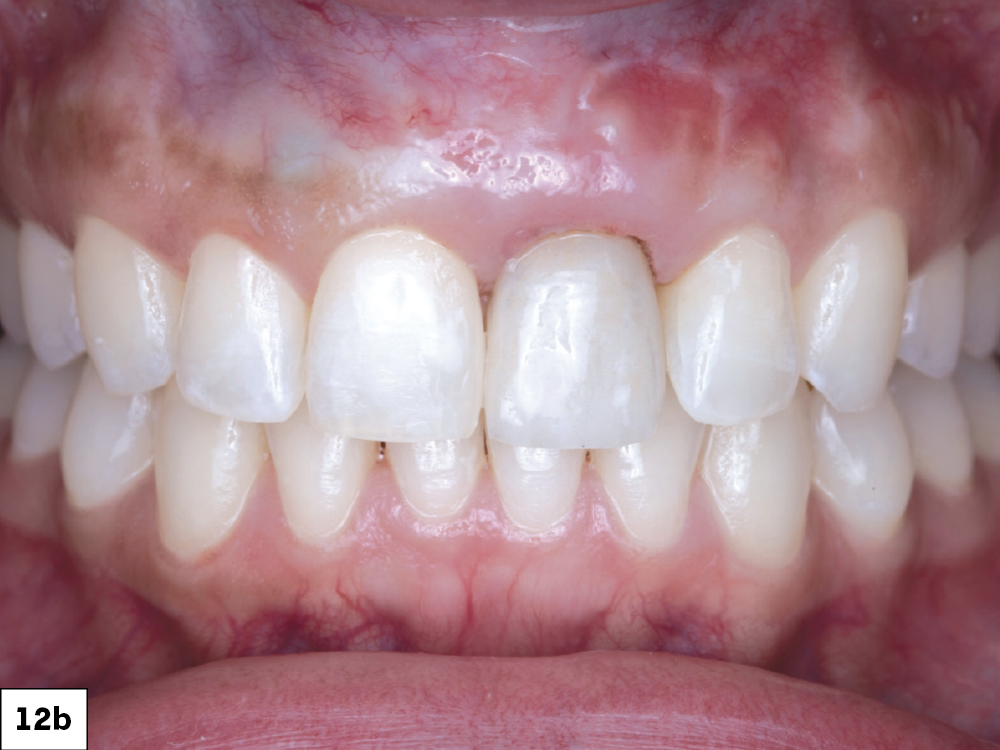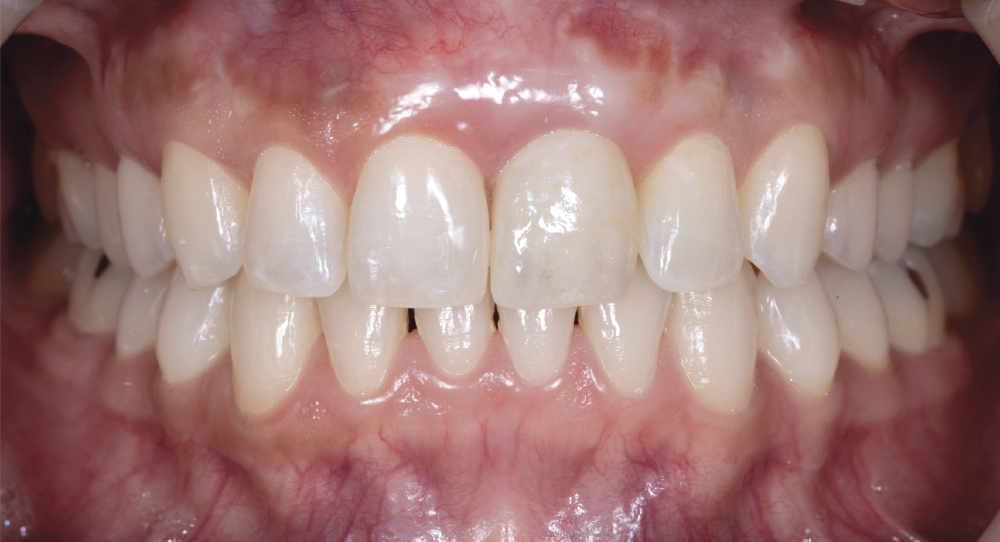Replacing a Single Central Incisor
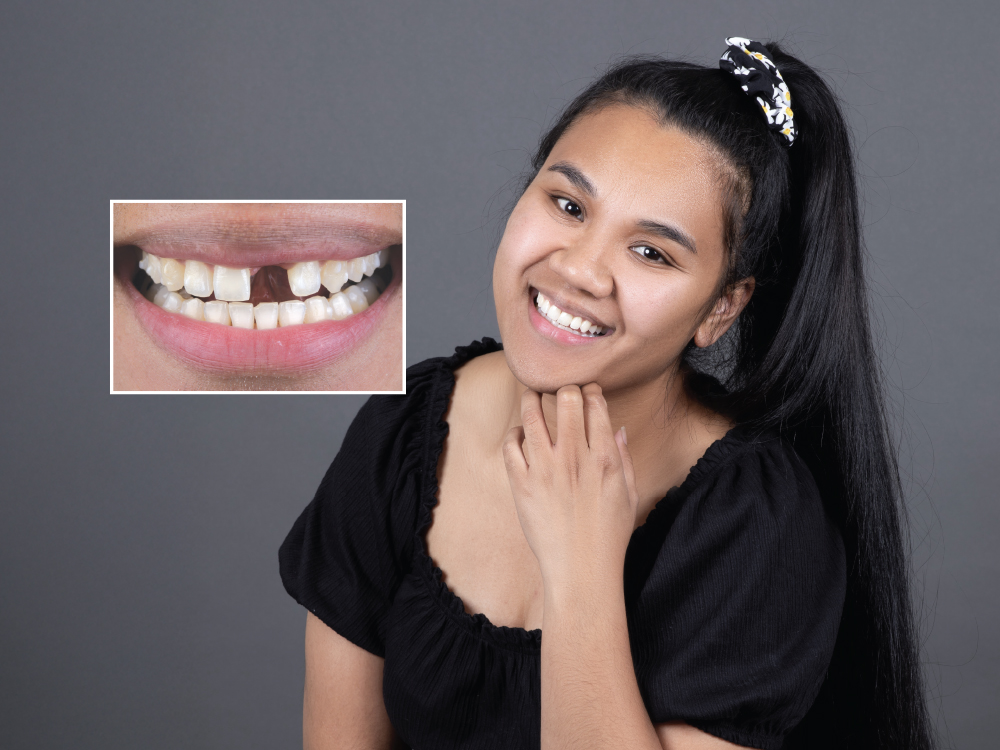
Several years ago, Raquel suffered a traumatic injury that caused the loss of her front tooth. Over time, she noticed that her teeth were beginning to shift, and her dentist initiated aligner therapy with the intent that she would receive a definitive replacement for tooth #9 upon completion.
When I met with Raquel, she had just completed aligner therapy. We discussed the space discrepancy between tooth #8 and the site for #9, and we agreed that the best solution was a partial coverage composite to reshape #8 and an implant-supported restoration to replace tooth #9.
A Glidewell HT™ Implant (Glidewell Direct; Irvine, Calif.) was chosen because it offers excellent primary stability, a clinically proven success rate and a simple surgical protocol. BruxZir® Esthetic Zirconia was chosen for the final crown because of its combination of strength and lifelike esthetics.
CASE REPORT
CONCLUSION
Raquel was overjoyed with the results, as she regained both the natural vibrancy of her smile and full functionality. The placement of her Glidewell HT Implant and BruxZir Esthetic crown marked the culmination of a lengthy journey of more than six years since her injury. This case required meticulous planning to ensure an adequate volume of soft tissue and bone, allowing for the desired esthetic outcome that will last Raquel for many years.
All third-party trademarks are property of their respective owners.

